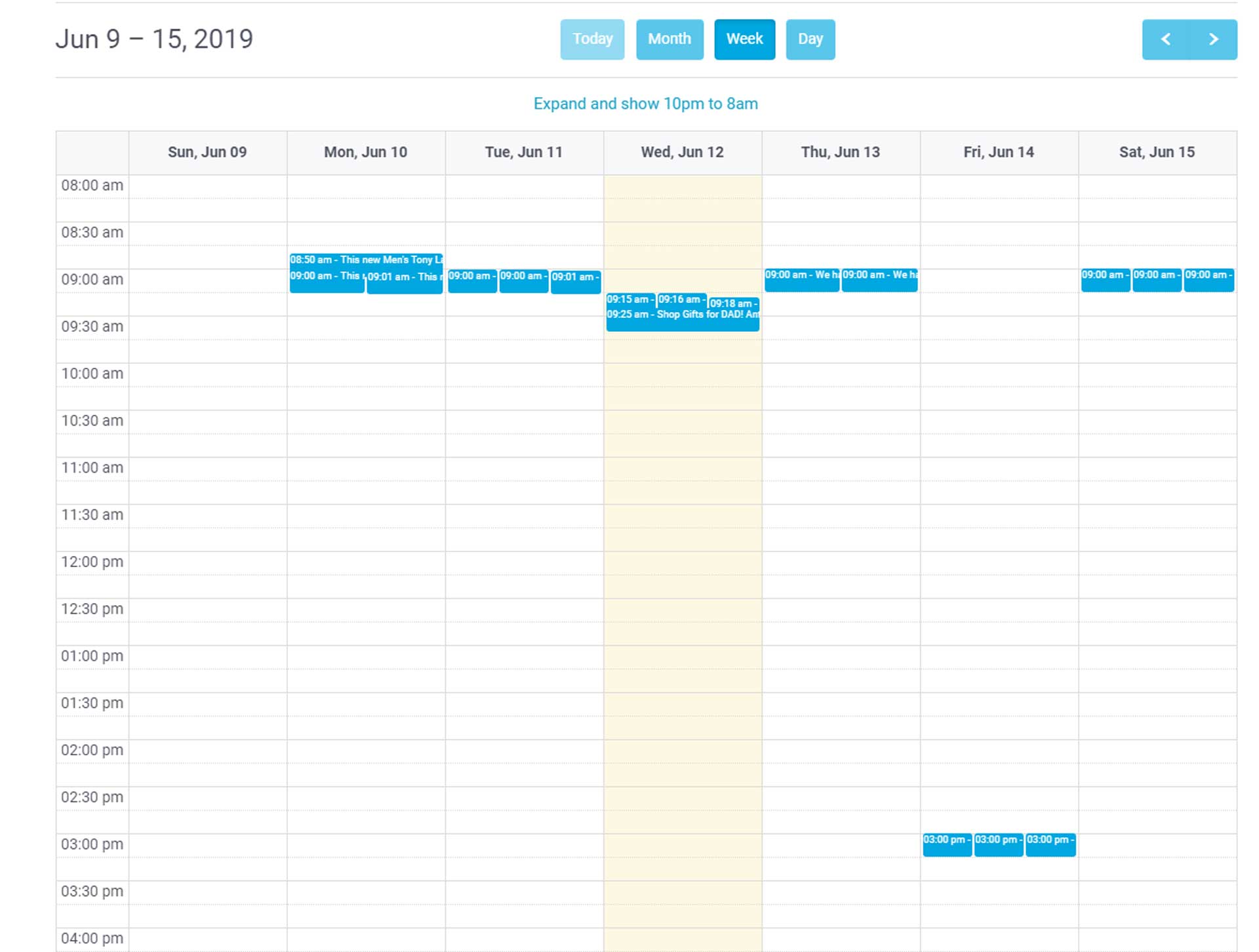
B2B (Business-to-business) marketing presents a whole world of possibilities with amazing rewards if planned and executed with care. If you’re looking to promote your product or service to other companies by means of social media marketing, this article is for you!
So, what is B2B marketing, and why might you need a strategy for it?
B2B digital marketing targets other businesses, rather than individuals. You’ll want to plan a B2B marketing strategy if you’re a product or service that caters and sells to other businesses rather than directly to the consumer.
Let’s imagine you are the proud owner of a brand-spanking-new scheduling and project management software that helps offices, companies, and all kinds of professional projects to run smoothly. Because other businesses like your own are likely going to need your product more than individuals, you’ll achieve better results and generate more sales if you target your marketing efforts to other businesses rather than employing direct-to-consumer strategies.
In case you haven’t guessed, there’s a whole art to really getting B2B digital marketing to pay off…but have no fear! In this article, we are going to take you through 8 steps that will provide you with the blueprint you need to get your B2B social media marketing strategies off the ground with optimum results.
Step 1: Define your ideal customer profile

In our experience, people tend to want to skip right over this step when they are ready to jump into their marketing shoes because frankly, it’s a bit tedious. That said…don’t! Defining your ideal customer profile is extremely important to ensure results on your marketing efforts, because a message that speaks to everyone, speaks to no one.
Figuring out your ideal customer entails having a brainstorming session with your team and pinpointing one company (since we’re talking B2B marketing) whose business would be sure to improve by using your product or service. Ask yourselves: “who needs us most, and why?” Maybe a company whose employees work remotely and don’t have a physical office space? Or whose services require great attention to detail and organization that is lacking in other products within your competition. Put a name and a face on at least one example of who you’d consider to be your ideal customer.
Bonus tip: defining your ideal customer is not about determining who is ideal for you, it’s about determining who your product is ideal for.
Step 2: Define your target audience

Once you’ve decided on that one ideal client whose life will never be the same after experiencing your product, the next step is defining your target audience. This is the step that will make or break your B2B strategy.
Here is why this step is so important: While your product or service “could” probably be useful and helpful to just about anyone, that’s too broad to base a B2B marketing plan on. You have to find a group of people to whom your communication style and marketing efforts will apply most to, this will help ensure that your advertising won’t fall on deaf ears.
So, take the hard work that you already invested in discovering your one ideal customer, and make a list of said customer’s defining characteristics that you can then apply on a broader scale to your overall target audience. Your list might include details such as: age, location, industry, interests, organization style, problems and challenges, workflow and style, etc.
No matter how witty and original your marketing tactics are, there is no one thing you can say or do that will convert everyone into a lead or sale. This is why any marketing plan must include a target audience, you need to know who you are speaking to in order to present them with content that they will find attractive, relatable, and engaging.
Step 3: Do your research on the competition

Now that you’ve determined who you want to target, it’s time to step back and take a look at who else is offering the same services or solutions that you are. Competitor research is priceless because it gives you a peek into what you’re up against, what your competition may be offering to your same target audience, how they are performing, what you might be able to do differently, and how you can stay ahead of the game.
You’ll want to start a tracking system with your top 10-15 competitors and keep tabs on info that can provide insight into what’s working for them, what’s not working, and where you can improve on their tactics.
You should dig deep in order to gain a clear understanding of what their SEO strategies are, what keywords they use and rank highest for, what they are posting on their social media, how many followers they have, calculate their engagement, what kind of content they get most attention on, how much they’re spending on advertising, etc.
Of course, competitor research can go a lot more in-depth too, you can do surveys, market research, attend their conferences, and much more. However, if you’re current focus is on a social media B2B strategy, you’ll want to start with the pertaining data first.


Even if you have the best, cleverest marketing campaign on the planet, if you aren’t posting on the channels that your target audience is spending time on, they won’t know you exist. This takes us back to why step number 2 and defining your target audience is so important, you have to know who they are in order to understand their online behavior. Where are they likely to be browsing or looking into solutions for their business?
If your product or service is targeted to small business owners or startups, you might lean toward channels like Facebook and Instagram. As a matter of fact, business decision makers spend 74% more time on Facebook than any other social media channels. If your focus is on catching big corporations and multi-tiered business models, you might focus more on getting seen and heard on LinkedIn to convert leads.
Don’t worry, this isn’t just guesswork…remember that one name that you came up with in step one — your ideal customer? Grab the name of that business and do some research on it: what channels do they post on more frequently, what is their online behavior like, what other pages and social media profiles do they interact most with, who do they follow? This will give you invaluable insight into how to get them in the bag with your social media marketing efforts.
Step 5: Set SMART goals and milestones

Implementing a marketing strategy without clear, set goals is like playing a basketball game without a hoop — you might get all sweaty dribbling the ball around, but you’ll never get to win.
SMART goal setting includes goals that are Specific, Measureable, Attainable, Relevant, and Timely. Let’s take a deeper look into each of these.
Specific: Define exactly what do want to achieve and what it would mean to achieve your goal or milestone
Measureable: The success of your goals should be based on objective facts and stats, not opinions or gut feelings. What numbers do you need to reach in order to accurately measure that you reached your target?

Attainable: You’ll want to choose goals that are achievable at your stage of growth as a company, even if they are a challenge. This includes laying out, planning, and scheduling all the specific action steps you will need to take in order to reach the goal.
Relevant: Your goals and milestones need to be in line with what your business’ model, structure, message, and communication style is all about.
Timely: Define the deadline by which you need to reach your goal. This ties in with the specific steps you will take to accomplish it, each step should have a start and finish date to get your to your goal on time.

Once you’ve determined your SMART goals, you’re ready to start setting some KPIs (key performance indicators) that will serve as check-ins along the road and help you ensure you’re progressing in the right direction.
Here are a few examples of how to measure KPIs for your social media platforms: level of followers, link or profile clicks, brand mentions, reposts, shares, comments or other actions taken on your posts, and active followers.
Make sure you set KPIs that are attainable and measurable, not just a list of “would-be-nice” goals to reach at some point along your way. Rather, they should be carefully thought out stepping stones that you need to reach in order to take the next step along your strategic planning. If you don’t reach one of the stepping stones, you’ll know that something needs tweaking and you can adjust your B2B strategy accordingly.
Step 7: Identify what kind of content performs best

Bill Gates wasn’t kidding when he wrote that “content is king”, and it rings true now more than even back in his day!
If you plan to use social media as a marketing tool, then what you choose to post is the prime factor that your target audience will use to decide whether or not they like what your offering and want to do business with you. Your posts should all be based on a consistent communication style and pattern that matches your brand, offer value to your followers, and give your followers and clients a positive impression of your company.
Need some help figuring out what to post or what your audience is interested in? You can use social listening tools to give you insight into what people are most interested in surrounding your industry. Also, performing hashtag and keyword research and keeping it updated at least twice a month is an important way to stay up to speed.
Also, pay attention to what platforms you’re posting on and at what times, keep track of which posts performed best so you can adapt your content and timing accordingly.


Time invested in careful planning and preparation of your content is one of the best investments you can make to ensure your social media marketing campaigns are a success. We hate to be the ones to break this to you, but you simply can’t expect to achieve great results on posts that are thrown together at the last minute with no rhyme or reason. Laying out a content calendar for each month or so in advance will give you a bird’s eye perspective on what your followers will be taking away after a month of seeing your social media posts.
Loomly, Hootsuite, and Monday are just a few options of social media editorial calendars and scheduling software that we promise will change your life for the better.
Are your posts engaging enough to draw your customers in? Are you posting relevant content on relevant dates and times (such as posts that talk about specific days of the week, special celebrations, seasonal trends, or simply whatever is trending at the moment)? Planning out your posts will prepare the way for you to pump out content that is likely to speak to your ideal target customer at a specific date or time, and also give you a whole vision for what you want to communicate through your brand’s messaging over time.

As you can see, a lot of hard work goes into developing a bull’s eye B2B social media strategy, but investing the time to do it right will really pay off! We sincerely hope this article provided you with some clear insight that you can now implement so you’ll get the most out of your next B2B social media marketing campaign. If you ever need an expert team to step in and do the heavy lifting of the planning, research, and preparation for your B2B social media marketing efforts, give us a holler and we’ll be happy to help!





